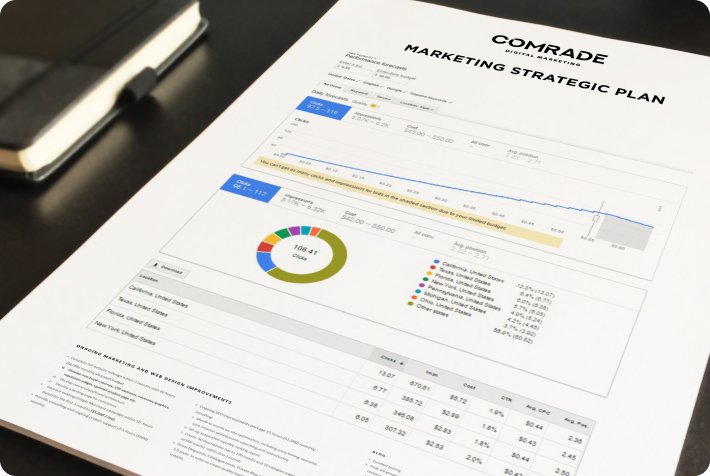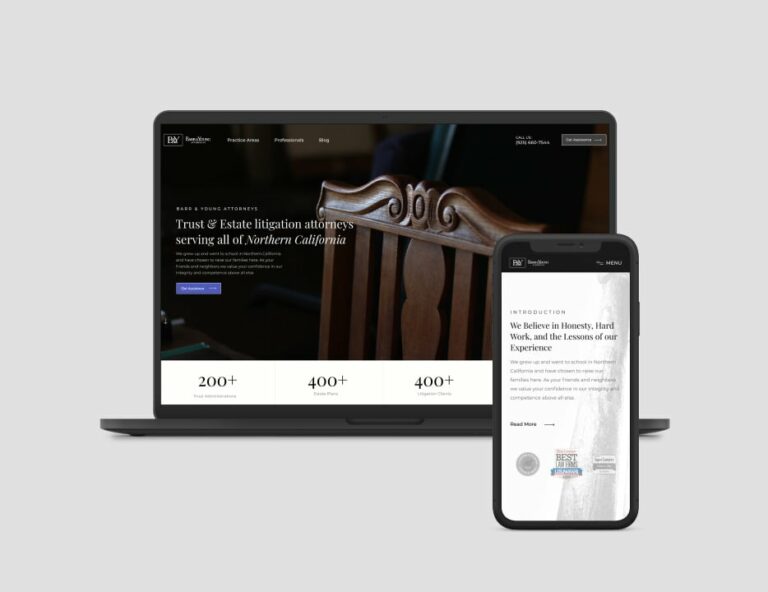
You need a sales funnel to attract leads and convert them into customers. So what exactly is a sales funnel, and how can you optimize each stage for maximum ROI?
This blog covers everything you need to know about marketing funnels, what shoppers need in every stage and how to create your brand’s funnel to improve profits and customer retention.
What Is a Sales Funnel?
Marketing sales funnels describe how a potential customer progresses from a prospect to purchasing a product.
Typically, qualified leads progress through different stages – usually the top (ToFu), middle (MoFu), and bottom (BoFu), depending on the company’s sales model.
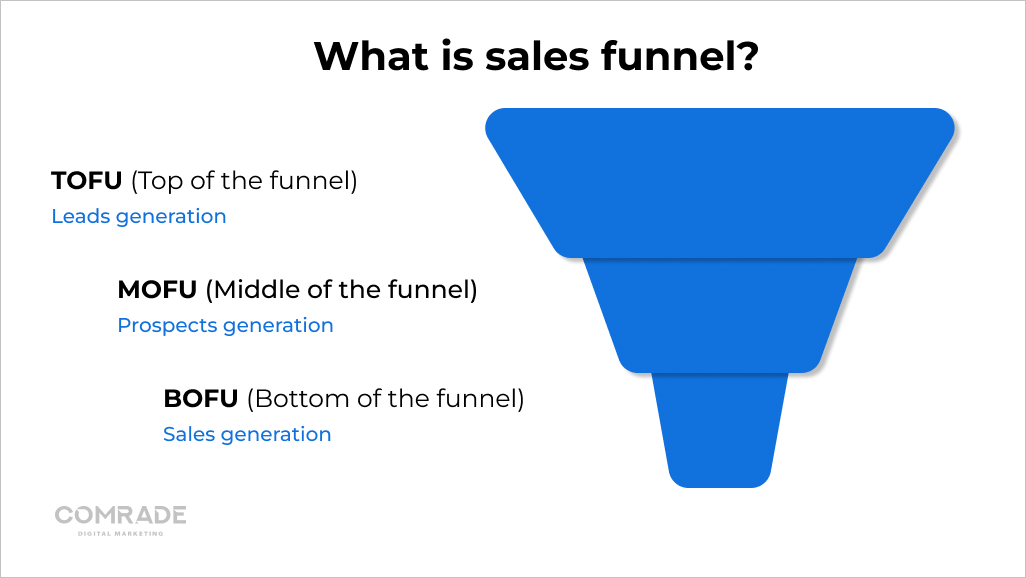
Comparing the sales process to a funnel is helpful because many potential customers begin near the top. However, only a fraction of these new leads makes it to the bottom.
A well-built sales funnel puts the right message in front of the right prospects at the right time. It is also an effective way to ensure seamless lead handoffs between marketing and sales teams.
Why Is the Sales Funnel Important?
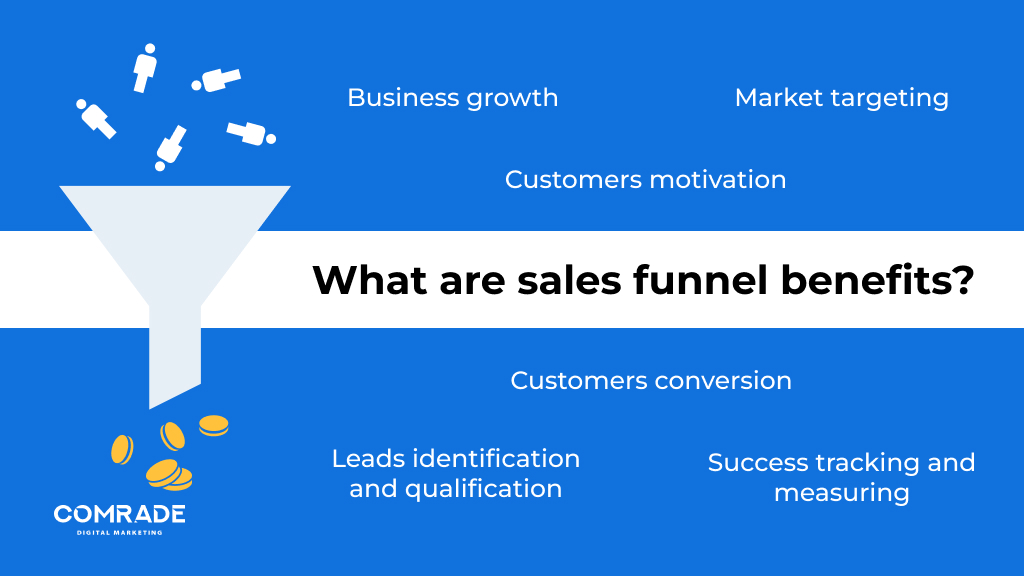
Marketing funnels are practical tools used by marketers to map the customer journey. Here are six benefits:
1. Optimized Sales and Marketing
Marketing-qualified leads can contact you at any stage of their customer journey, whether early in their Awareness stage or late in their competitive research phase. Hence, aligning your marketing and sales efforts is crucial so that they receive the information they need, even if you can’t provide it directly. You can deliver the right offer outside sales team conversations by implementing a proper marketing funnel.
2. The Right Message at the Right Time
A purchase funnel lets you see the customer journey and determine what leads need to progress to the next stage. Prospects in the Awareness stage of the funnel require blog posts, infographics, landing pages, and checklists to familiarize themselves with your brand. In contrast, those at the Decision stage want overviews, webinars, demos, and case studies to persuade them.
3. Cost-Effective
Creating curated content for all marketing funnel stages aligns marketing and sales strategies and saves time. You can share blog posts and video content over and over again. Don’t feel like repeating product information? Send your leads a demo video or product guide via social media or email.
4. Increased Sales
A fully optimized sales funnel increases leads. By generating more leads and converting them into brand advocates, you’ll see an immediate increase in revenue. Make sure you fix all pain points and potential friction to ensure more prospects reach the bottom of the funnel, ready to buy.
5. Forecast Future Profits
Multiplying the total estimated profits by conversion metrics from the Awareness to Action stages reveals the percentage of leads you can expect to convert. This formula allows you to forecast sales and determine where and how to increase customer lifetime value (CLV).
Traditional Sales Funnel Example
It is important to remember that sales funnels are not always linear. A prospective customer may enter the Decision stage without going through the Awareness or Consideration stages.
Additionally, customers may move between stages multiple times before making a purchase.
Here are a few examples of how the purchase funnel can work:
- Influencer social media post > Product page > Conversion
- Google search > Website > Subscribe to email list > Retargeting email > Conversion
- Blog post > Product page > YouTube tutorial > Product page > Conversion
- Twitter Ad > Landing Page > Conversion
Delivering Business Results: Our Digital Marketing Case Studies
What Are the 4 Stages of a Sales Funnel?
Prospects pass through four stages of the sales funnel: Awareness, Interest, Decision, and Action (AIDA). Each stage represents a prospect’s mindset and requires a different marketing approach. You can use these stages to optimize customer journeys and convert qualified leads into loyal customers.
1. Awareness
At the top of the sales funnel (ToFu) is the Awareness stage, populated by the most significant number of potential customers. These individuals aren’t ready to become prospects yet. It’s the first time they have come into contact with your brand and its offerings via:
- Social media;
- Google search results (SERPs);
- Family and friends;
- Reading your blog; or
- Paid online advertising.
While possible, it’s rare for people at this stage to convert into a customer. You’ll need to implement orchestrated lead nurturing (content marketing) to get them to the Consideration stage of the funnel.
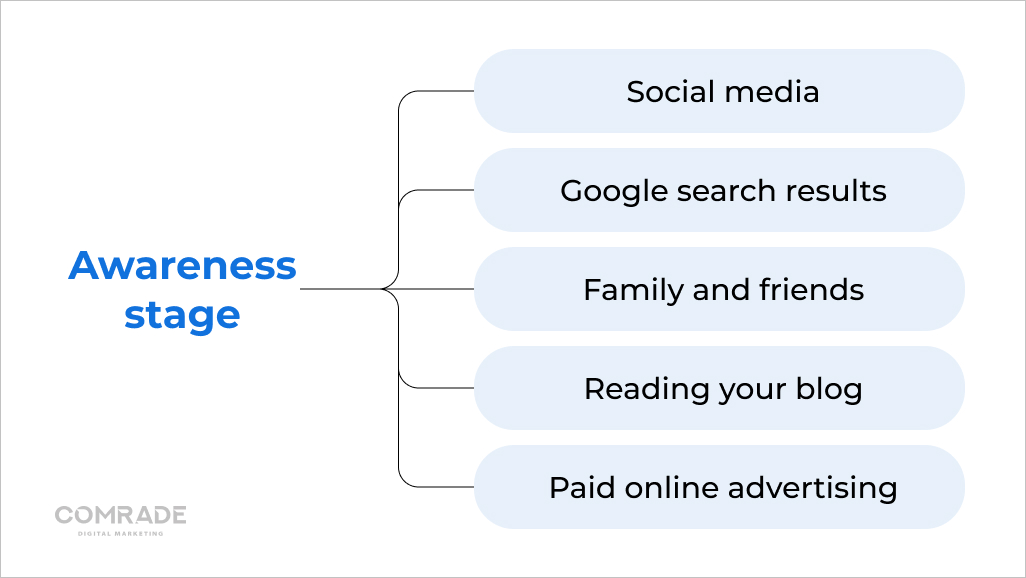
That’s because most prospects require at least seven touchpoints before becoming customers. The Awareness or Discovery stage is merely an opportunity – albeit an important one – for you to make an excellent first impression.
After all, your prospects have only become aware of a problem and need to learn more about it and its possible solutions.
2. Interest
The Interest stage is part of the middle of the funnel (MoFu). Here prospects start sleuthing – asking specific questions and conducting competitive research (primarily online).
Hypothetically, those who stumbled across your brand during the Awareness stage will spend time getting to know more about your products or services.
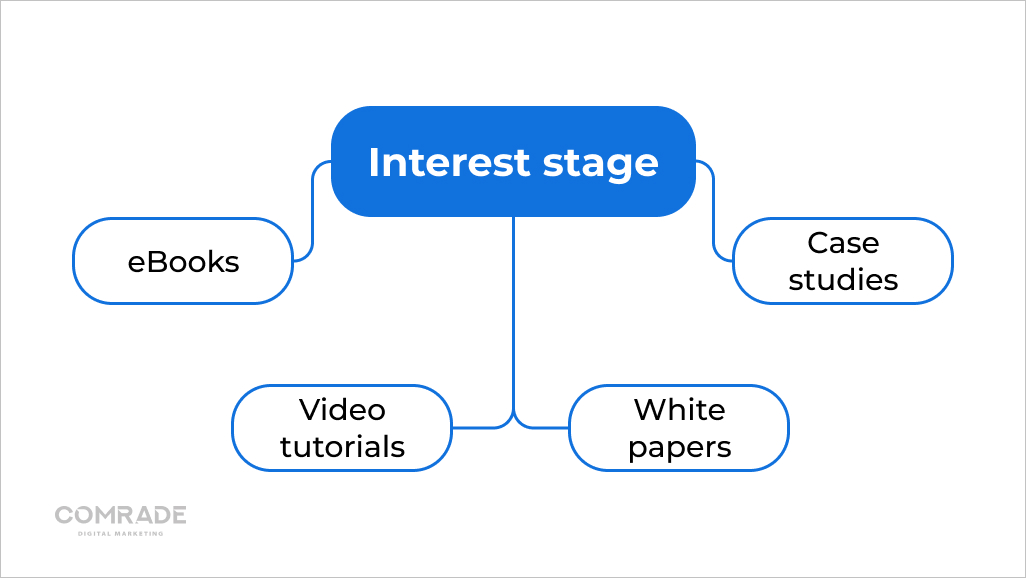
In effect, they have become active leads; it’s your job to keep them interested and nudge them further down the conversion funnel. Ideally, you want to persuade them via content marketing that your brand is superior to its competitors.
Your marketing content must demonstrate expertise and assist prospects in making an informed decision. Creating content that answers their questions and empowers them to articulate their problem is the goal at this stage.
Instead of simply capturing the attention of your potential customers, you’re re-engaging leads and moving them toward a purchase.
3. Decision
At the Decision stage of the sales funnel, your lead is a full-blown prospect. You have their attention, and they’re legitimately interested in your offerings. However, they still need more time to close the deal.
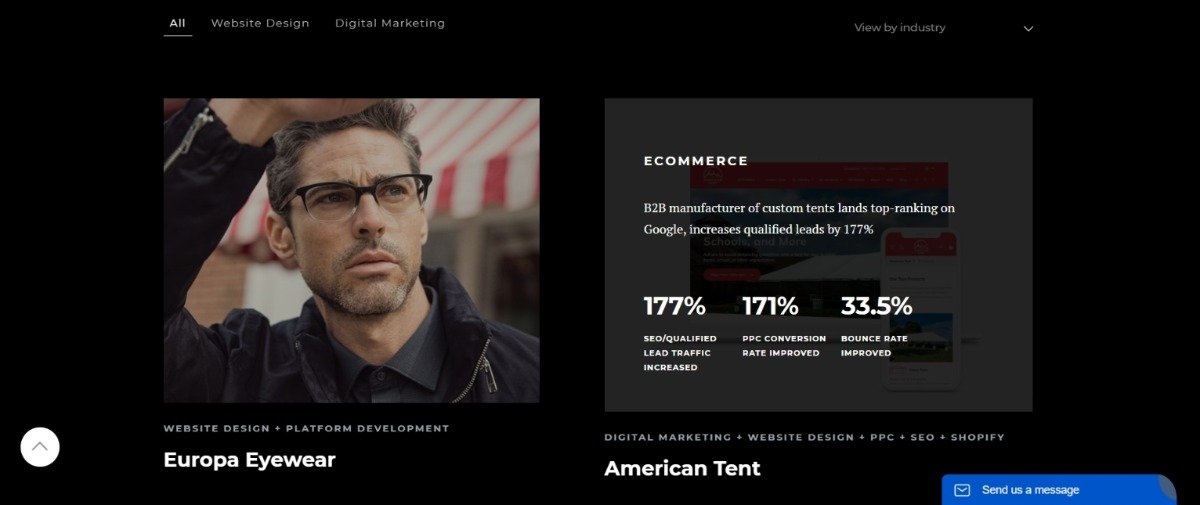
Showcase marketing case results to guide potential leads through the decision stage, nurturing them down the sales funnel
Because they’re not 100% certain your solution suits their needs, they’ll conduct further research and compare prices, packages, and other factors. Your main objective at this particular stage is to show them what return they can expect from their investment in your products or services.
Free trials and shipping, discounted services, or bonus products are common tactics marketers use to make brands desirable. Make your best offer to convert prospects.
4. Action
The final stage of the sales funnel is Action. Here prospects will decide whether to convert, delay or abandon the process. Since candidates have made it thus far, you want to validate their decision and persuade them now is an excellent time to purchase.
Many businesses falsely assume this stage is just about closing deals. However, the fundamental objective is to set prospects up for success with your product or service so they become long-term customers and part of your brand’s ecosystem.
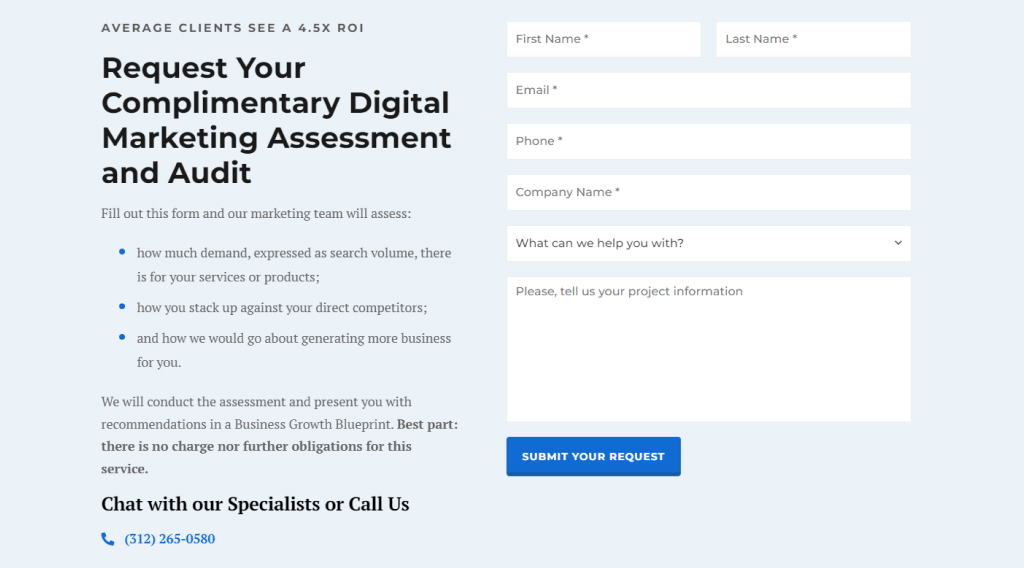
To convert a potential lead at the action stage, provide a compelling call-to-action, offer incentives, and create a user-friendly contact form
Although the sale is complete, the process continues. The focus shifts towards customer retention, so they make ongoing future purchases. Building loyalty by requesting feedback or offering after-purchase support and having rewards programs maintains engagement.
And remember, if a prospect walks away, you can still follow up with them via email newsletters, sales promotions, and other touchpoints to keep your brand top of mind.
Comrade Digital Marketing Agency can help you with the above if you’re unsure how to go about it. Schedule a free consultation.
Example of Sales Funnel Stages
Imagine you own an eCommerce skincare business. You know your target audience is on Instagram. Most of your customers are females between 20 and 35 years old.
Now, let’s pretend you’re launching a new winter range. You run an Instagram video ad that drives viewers to a landing page. On the page, you ask them to subscribe to your email list for a 10% discount on your winter lipstick range.
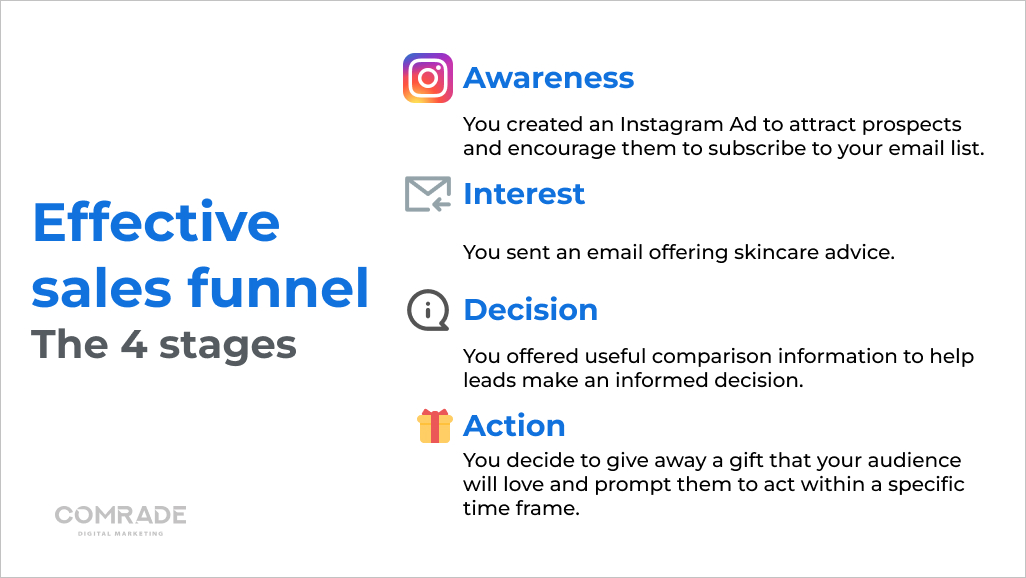
Everyone who signs up to your email list is now a prospect and has entered the sales funnel. If they don’t make a purchase immediately, you can email them later in the week to educate them about winter skin care.
Perhaps you run a competition or have a live stream Q&A even with a beauty influencer or have a fun quiz to help customers find their best lipstick shade.
Regardless, your email content subtly educates them about why they should invest in your makeup brand. Perhaps another email contains an influencer comparison article between your products and competitors.
At the end of your email drip campaign, you offer a free gift to every customer who buys a winter-range product within the next week. Now, suddenly your sales have increased by 30!
So, how does this fit into AIDA?
- Awareness: You created an Instagram Ad to attract prospects and encourage them to subscribe to your email list.
- Interest: You sent an email offering skincare advice.
- Decision: You offered useful comparison information to help leads make an informed decision.
- Action: You decide to give away a gift that your audience will love and prompt them to act within a specific time frame.
How to Create a Powerful Marketing Funnel?
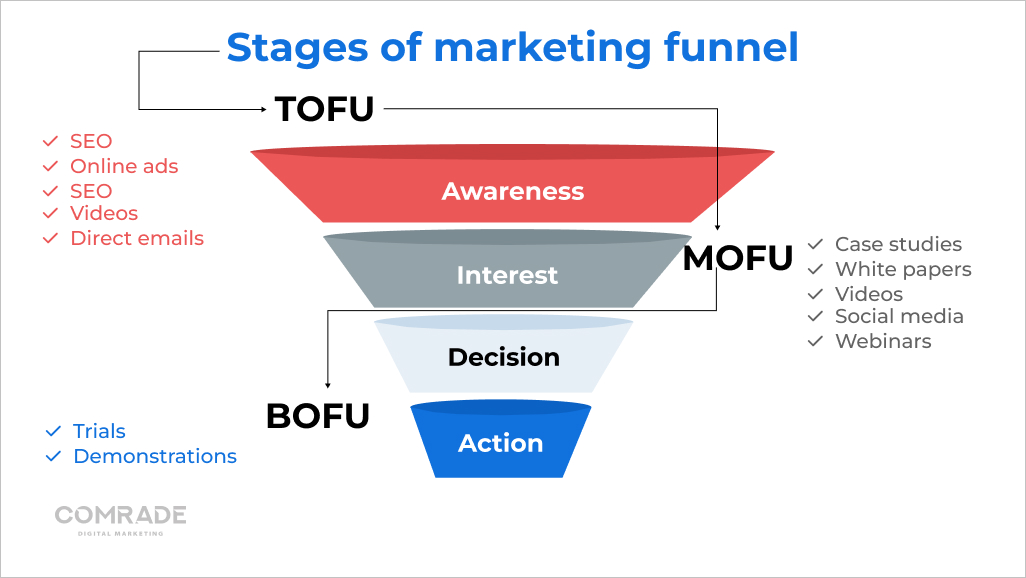
As we’ve mentioned, a marketing funnel works in stages, from a wide section at the top (Top of the Funnel) that attracts many people through the narrower section in the middle (Middle of the Funnel), and down to the narrowest section (Bottom Funnel), which serious buyers populate.
Understanding Customer Journey (TOFU)
Prospects will likely come across your company during their day-to-day activities, whether they see your ads on social media or YouTube videos. They may be searching for answers to specific questions, but they need to be made aware that you can solve their needs or problems.
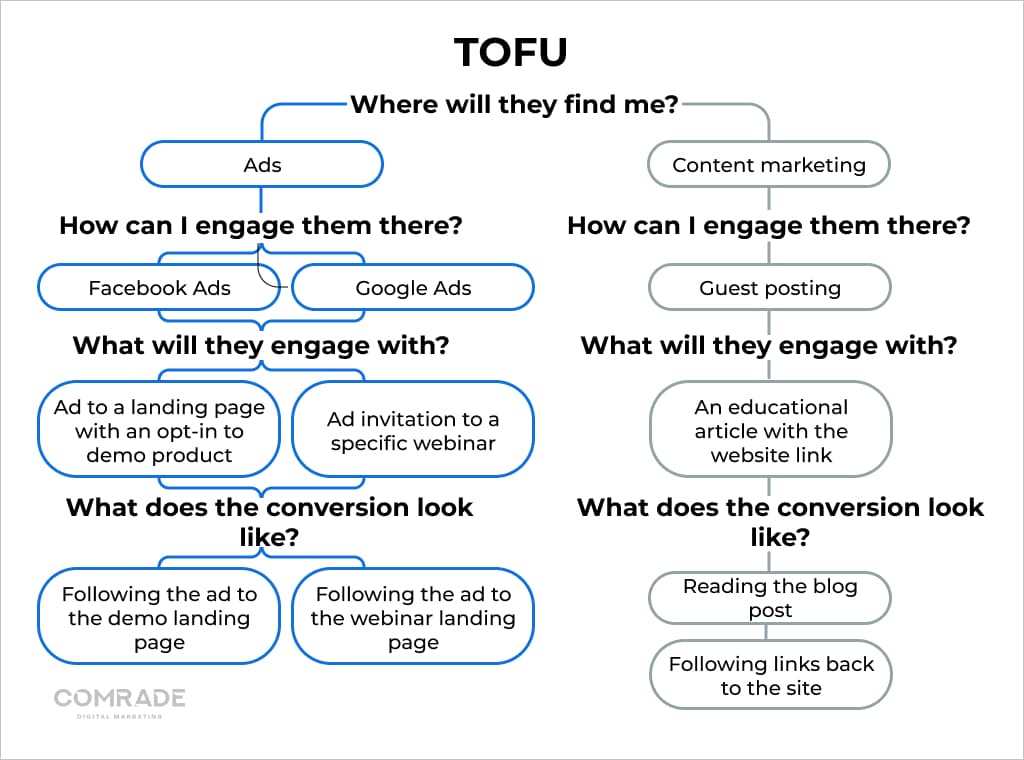
For example, a newbie marathon runner might ask, “What types of supplements are best for running?” but won’t be looking for running shoes yet.
Your sales funnel will only work if your marketing strategy is strong, not just sales tactics (which come later when you try to close a deal). Your job is to get your brand out there and make it easy for potential customers to connect with you via landing pages and blog posts.
Catching the Prospective Customers’ Interest (MOFU)
Getting qualified prospects through the interest stage is about showing them your product or service is the best solution for their needs. They will want to know more about what you offer, like specific product features or service inclusions, and may compare your services with your competitors. This is where the sales funnel narrows.

Closing the Sale (BOFU)
By now, your prospects have identified they have a problem and are getting ready to pay for a solution. They’ll want more qualifying information like social proof and customer testimonials.
At this stage, optimizing your website for conversions is a good idea. You can also provide money-back guarantees and further discounts that sweeten the buying process and make them want to purchase your product.
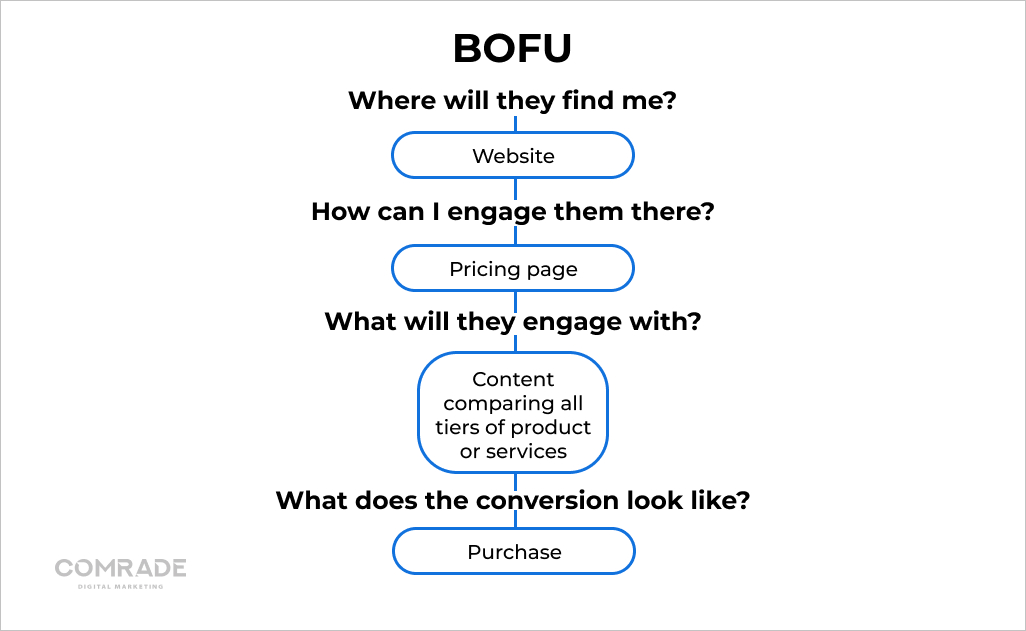
How to Optimize Your Sales Funnel
Not all marketing funnels are created equal. Remember, your sales funnel should be personalized to your business. Ideally, your marketing funnel should give you an idea of what to do to gain the trust of your target audience.
Creating a funnel is one thing: you may already have it one in one way or another, but how do you make it work?
1. Set Up a Landing Page
Instead of forcing people to buy from you, capture leads instead. You can use search engine optimization (SEO) to drive traffic to a landing page.
A landing page shuttles your audience from stage one to stage two of the sales pipeline. Its call to action should clearly state what your audience should do next.
How does this work?
Often, prospects discover a company for the first time on a landing page when they click on ads, sign up for webinars, or download ebooks.
A landing page aims to communicate who you are as a company and how you can benefit your prospects (after all, this might be your only chance to impress them).
Therefore, ensure your landing pages have a form for prospects to enter their information – you want to capture their email address so you can keep in touch and send them further down the sales funnel!
2. Use Content Marketing
You must publish engaging content to build relationships with your new and current customers. Whether it’s your products or philosophy, when customers resonate, they’re more likely to engage.
Content on social media should encourage customers to like, comment, and share. Your website should be just as engaging, sharing the same tonality and brand persona featured on your socials. Consumers appreciate consistency.
Ramp up your marketing efforts by investing in video production, graphic designers, copywriters, and photographers.
Content marketing is essential for today’s digital marketing funnel. Most users would instead read articles about a company than watch ads.
By developing user-focused content marketing strategies, you can reach target audiences looking for answers to their problems. It is also possible to optimize content for search engines using SEO.
3. Research Your Target Audience
How would you describe your ideal customer? You should not make assumptions or guesses when answering this question. Instead, build your buyer personas based on data (from Google Analytics) and research.
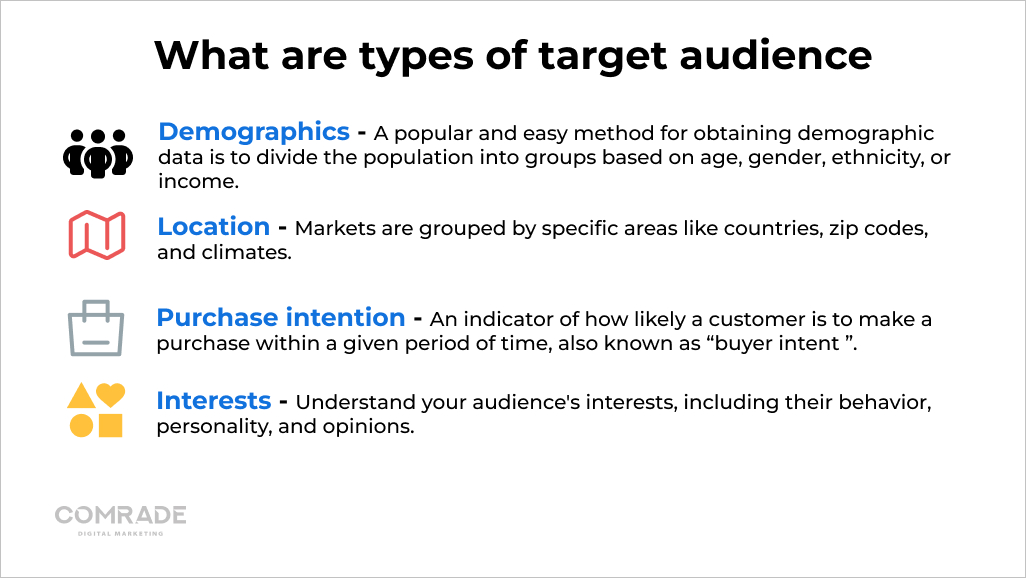
Create buyer personas for your target audience. Include information such as age, gender, income, location, etc. Depending on your product or service, this may be pretty specific. The more you research your audience, the greater your chance of converting them.
Once you know who you’re trying to reach, you can decide how to reach them – through social media, marketing campaigns, sales prospecting, marketing automation, etc.
Identifying your audience is crucial to maximizing conversions at the bottom of the funnel. A sales funnel that targets the wrong type of customer will be ineffective, costing you time, money, and resources and delivering very little in return.
4. Offer Value During Sales Process
There are four types of emotionally compelling content: funny, helpful, beautiful, and inspiring. Today’s audiences are savvy; they want valuable brand content that enriches their lives. The best content does that and puts your brand in front of potential customers while they’re actively preparing to make a purchase.
Effectively educating your audience shows them how your products and services make their lives easier. What pain point does your target audience face? What is the reason most people seek the solutions you provide? Your content should address these challenges.
The last thing you want is for a prospect to arrive at the landing page only to find you’re asking them to buy your product without offering anything valuable. Offering Discounts and coupon codes can motivate your leads to act – this is just one example.
How vital is valuable content? 67% of marketers report that content marketing generates demand/leads. In addition, 72% of marketers say that content marketing helps educate the audience, and 63% say it helps build loyalty with existing clients/customers (CMI).
5. Nurture Relations
Your sales team should reach the maximum number of relevant prospects to be effective and profitable. For this to happen, nurturing must occur at the top of the funnel (at the Awareness and Interest stages).
You can nurture the prospects by providing them with content that helps them understand your brand better, such as how-to guides, eBooks, checklists, surveys, and case studies.
Today’s sales cycle is significantly longer, so nurturing leads is crucial to conversion and profit maximization—lead nurturing results in more sales. The best lead nurturing companies generate 50% more sales-ready leads at a 33% lower cost (Marketo).
A good flow of people from the top all the way down the funnel will ensure your business’s success. Leads require different information at different points in their buying journey, determined by the top, middle, and bottom of your sales funnel.
Thus, the nurturing process must be applied in all funnel stages. Relevant content is key!
6. Use Call-to-Action/Upsell
Thus, you should feature them heavily in your content. You can use phrases such as “Try our demo right now!” or “Get in touch with us today.”

An example of a CTA
Also, include CTAs in promotional emails and at the basket stage of the checkout for any last-minute offers. Upselling encourages buyers to purchase or spend a little more.
Make sure your CTAs are enticing by using bold text and a pop of color – this ensures they’re easy to identify. A CTA can also be a clickable button that leads the customer to another landing page, such as ‘Go Premium.’
The bottom line: Each stage of the digital marketing funnel should have a clear call to action. If your customer has made a purchase, you should upsell to them.
7. Social Media Marketing Is Your Friend
Previously, social media was only used at ToFu to generate brand awareness. However, considering over 70% of Americans use social media, utilizing it is a no-brainer (Pew Research).
Tracking social media metrics leads to tangible business outcomes. You can see which networks generate leads, which posts convert, and where your audience is most engaged.
Social media can be used at any stage of the sales funnel for:
- Building brand awareness
- Directing traffic to your website or landing page
- Making sales using the “Shop” feature in the apps
Consequently, you can map the entire buyer journey – from the first interaction with a social post to the point at which a prospect becomes a customer. These statistical insights help determine where to invest resources and position your campaign.
When you leverage the power of your social media into your sales funnel, you increase prospects and convert more leads.
8. Be Vigilant
When your prospects become new customers, don’t forget about them. Keep sending them educational content. You should thank them for their purchase and tell them about sales or promotions. Build customer trust and loyalty by involving them in your social media strategy.
Finally, as you develop consistent sales funnel strategies, you’ll see what’s working at different sales funnel stages and what isn’t. For instance, if prospects drop off before the Decision stage, you’ll know you need to make your brand and solution more enticing while they’re still engaged.
Just like digital marketing, marketing funnels are organic and ever-evolving. They should continuously be monitored and optimized as you learn more about your customers and your business grows. Remember, acquiring a new customer can cost five times more than retaining an existing customer (Outbound Engine).
Work with Marketing Funnel Experts
A marketing funnel is a unified system. Each section of the journey compounds to achieving specific goals, reducing friction, building trust with your audience, raising brand awareness, increasing your customer base, and generating profits.
Comrade is a full-service digital marketing agency with a passionate team of marketing experts ready to optimize your sales funnel. Book a free consultation to learn how we can take your business to the next level.
Frequently Asked Questions
In what cities do you operate?
Comrade originates in Chicago, but we worked all around the United States. We can help your business grow and increase revenue whenever you are. We have offices across most major cities in the US. For example, we can offer digital marketing services in San Francisco or Houston. You can even find our internet marketing experts in New York! If you want to know more about our Indianapolis digital marketing agency or find out how exactly we can help you, contact us via the phone or email.








